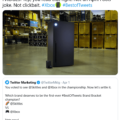
ZeroAvia, a manufacturer of hydrogen-electric aircraft, has completed a short test flight with a hydrogen aircraft. It used the company’s largest hydrogen engine to date, supplemented by a regular turboprop engine.
The flight took place in the United Kingdom and lasted ten minutes. This was done with a converted Dornier Do-228 with the hydrogen engine attached to the left wing. The tested configuration involved a dual fuel cell propulsion, with lithium-ion batteries providing peak power for takeoff, which was also intended as redundancy.
For this test flight, the hydrogen tanks and fuel cell systems were placed in the cabin, but for commercial flights that will eventually be stored externally to create space for passengers. During the test flight, the hydrogen-powered engine was mounted on the left wing and a regular Honeywell TPE-331 engine was mounted on the right wing just to be on the safe side. According to ZeroAvia, all systems performed as expected.
The company states that with this test flight it can take a path to applying for certification as early as this year. ZeroAvia previously announced that from 2024 wants to fly between the Netherlands and the United Kingdom, although the company now says that it will only be able to fly commercial routes from 2025.
The intention is to develop a propulsion system with a peak power of 600kW to enable an aircraft with 9 to 19 passengers. This aircraft must have a range of about 482 km. Ultimately, the manufacturer wants to further develop the technology for larger aircraft with up to 90 passengers; a program to realize the necessary drive from 2 to 5 MW has already started. An aircraft with 40 to 80 passengers should fly in 2027 and have a range of 1126km.











